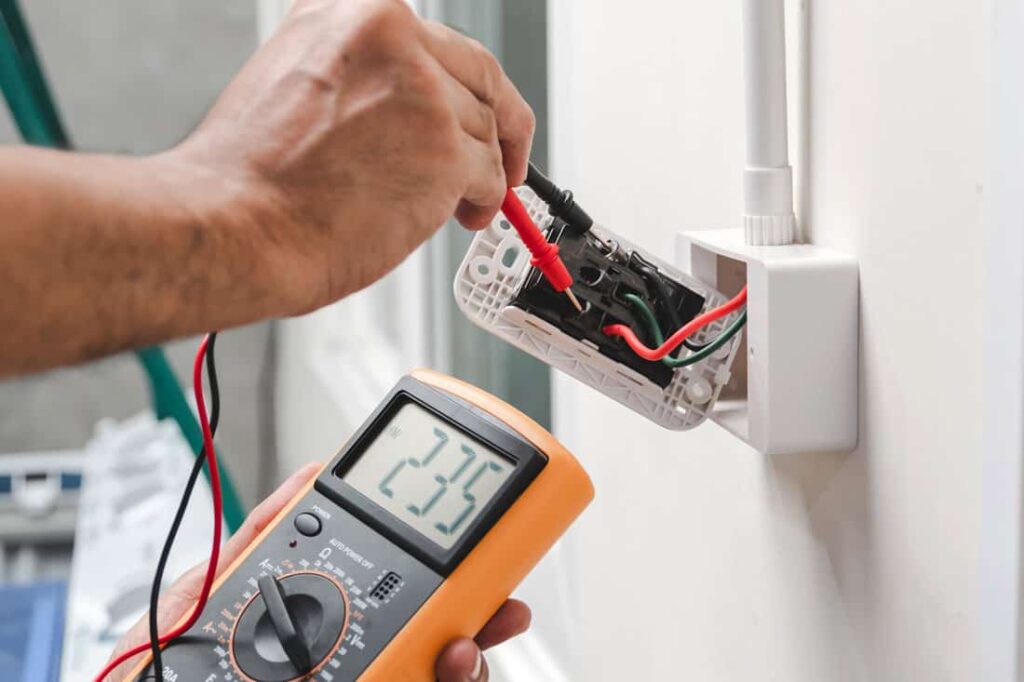Black Is Positive Or Negative Wire! How to Identify
Figuring out if a black wire is positive or negative depends on some rules. Usually, black wires carry electricity and are considered hot or live. But sometimes, in special cases or custom setups, this might not be true.
To check, use a tool like a multimeter to test for voltage. Safety is crucial, so treat black wires as if they’re carrying electricity. Look for labels or marks to help identify them. Properly recognizing wires is important for safe connections and device operation.
If you’re unsure, follow electrical codes or get help from a professional to be sure about the wires.
Why is Identifying Wires Important?

Safety Considerations
Identifying wires is paramount for safety. Different wires serve distinct purposes, and misidentification can lead to electrical hazards.
For instance, mistaking a live wire for a neutral one can result in shock or fire. Proper identification ensures that safety measures are appropriately applied, reducing the risk of accidents.
Proper Electrical Connections
Correctly identifying wires is crucial for establishing effective electrical connections. Whether setting up a new appliance or working on a circuit, knowing which wire is which ensures that connections are made accurately.
This not only guarantees the functionality of the system but also prevents issues like short circuits.
Avoiding Potential Damage to Devices
Incorrectly connecting wires can harm electronic devices. Devices are designed to work with specific voltages and polarities.
If wires are mismatched, devices may not function correctly, and in some cases, irreparable damage can occur. Proper wire identification safeguards devices, prolonging their lifespan and maintaining optimal performance.
What are the basics of wire color codes, and how does black fit into the scheme?
Wire color codes are essential for understanding the function of electrical wires. They help identify the purpose of each wire and ensure safe installations. The basics of wire color codes commonly include:
Black Wire
Traditionally, black wires are used as hot or live wires, carrying electrical current from the power source. In most standard applications, black signifies a positive or “hot” wire.
White or Gray Wire
White or gray wires are typically used as neutral wires, providing a return path for the current to complete the circuit. They are considered the “grounded” conductor.
Green or Bare Copper Wire
These wires are used for grounding. They provide a path for electrical currents to safely dissipate into the ground, preventing electrical shocks.
Red and Blue Wires
These are often used as secondary hot wires in specific applications, indicating a different phase or function in the electrical system.
Is black always associated with a specific charge, or are there exceptions?
Yes, generally, black wires carry a positive charge in electrical systems. However, there can be exceptions, so it’s important to check guidelines or instructions to confirm the role of black wires in specific cases.
Common Understanding of Black Wires
Traditionally, black wires are like the energetic messengers in electrical systems. They typically carry a positive or “hot” charge, delivering electrical power from the source to where it’s needed, like your appliances or devices.
Variations and Exceptions
However, there’s a twist—sometimes, especially in specific situations or unique setups, the usual color rules might not apply. Different standards or special cases might use alternative colors for specific purposes. For instance, in certain regions or industries, they might have their own color codes that deviate from the norm.
Importance of Checking Local Guidelines
This is where it gets important to check local guidelines or any instructions provided by manufacturers. These guidelines act as a kind of rulebook for each specific electrical system, ensuring that you correctly interpret what each wire is doing. It’s like reading the map of your electrical system to understand the role of black wires in that particular context.
Safety and Precision
Being aware of these exceptions is crucial for safe and precise electrical work. It ensures that you’re not making assumptions that could lead to potential issues or hazards. By double-checking and following the rules for a specific setup, you’re guaranteeing that everything works smoothly and safely in your electrical system.
What practical tips and tools can help easily identify positive and negative wires?

Identifying positive and negative wires can be made easier with these practical tips and tools:
Use a Multimeter
A multimeter is a handy tool that can measure voltage. By connecting its probes to the wires, you can determine if the wire is carrying a positive or negative charge.
Check Wire Markings
Many wires come with markings or labels. Look for “+” or “-” signs, color codes, or other indicators that can help identify the polarity.
Inspect Wire Size
In some cases, positive and negative wires might differ in size. Larger wires often carry a positive charge, while smaller ones may be negative.
Follow Color Codes
Adhere to standard color codes. While black is often positive, red can also indicate a positive wire. White or blue may signify negative wires.
Consult Manuals or Documentation
If available, refer to the user manual or wiring documentation for the device or system. It often provides information on wire identification.
Use a Voltage Detector
Voltage detectors are simple tools that can indicate the presence of voltage in a wire. They can be useful for quickly identifying live wires.
Perform a Polarity Test
Connect the wire to a known voltage source and use a test light or another device to check polarity. This method helps confirm the positive and negative connections.
FAQ
Does black go positive?
Black wires are generally associated with positive charge in electrical systems, but there can be exceptions. It’s essential to check specific guidelines or instructions to confirm the role of black wires in a particular context.
Is blue positive or negative?
Blue wires are typically used as the negative or neutral in electrical systems. However, it’s important to follow local color codes and guidelines, as practices can vary.
Is yellow positive or negative?
Yellow wires can vary in their role depending on the context. In some cases, yellow may indicate a positive charge, but always refer to specific guidelines or color codes for accurate identification.
What Colour is positive?
The color associated with positive charge can vary, but commonly, black, red, and sometimes blue are used for positive wires. It’s crucial to follow color codes and guidelines for precise identification.
Is red or black positive?
Red wires are often associated with positive charge, while black wires can also be positive. It depends on the wiring standards or guidelines applicable in a specific context.
What are the 3 colored wires?
The three primary colored wires commonly used in electrical systems are black, red, and blue. They often represent positive, positive or phase, and negative or neutral, respectively.
Is black wire negative?
Black wires are generally used as positive or live wires in standard electrical practices. However, exceptions exist, so it’s important to verify guidelines or instructions for accurate identification.
Is white or black positive?
In standard electrical color codes, black wires are often positive or live, while white wires are typically neutral or negative. However, it’s crucial to follow specific guidelines for accuracy.
Is green or black positive?
Green wires are usually reserved for grounding purposes, while black wires are commonly associated with positive charge. Following local color codes ensures proper identification.
Is brown positive or negative?
Brown wires are often used for live or positive connections in electrical systems. To be certain, always refer to local guidelines or color codes.
Which wire is hot?
In electrical terminology, the “hot” wire is the one that carries the current. This is often represented by colors like black, red, or brown, depending on local conventions and standards.
Final thoughts
To sum up, figuring out if a black wire is positive or negative is vital for safe electrical connections. Tools like multimeters, checking for markings, and following color codes can help in this process. Safety should always come first, so refer to guidelines and seek professional help when necessary to ensure accurate identification and a safe electrical setup.







